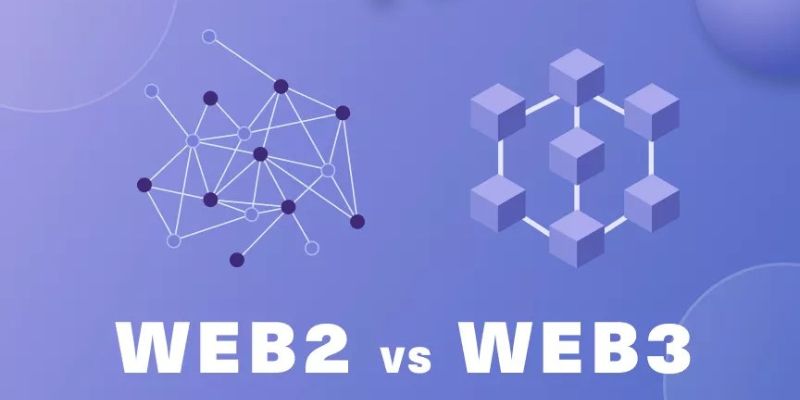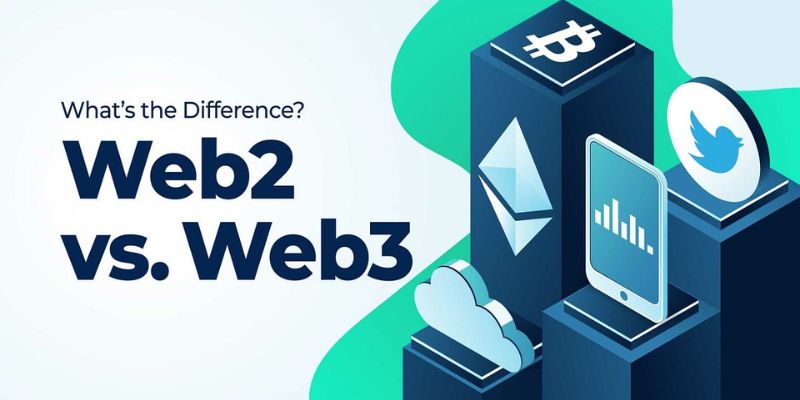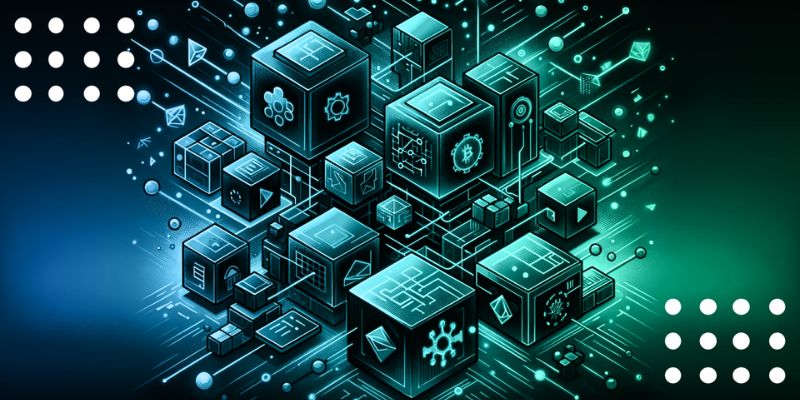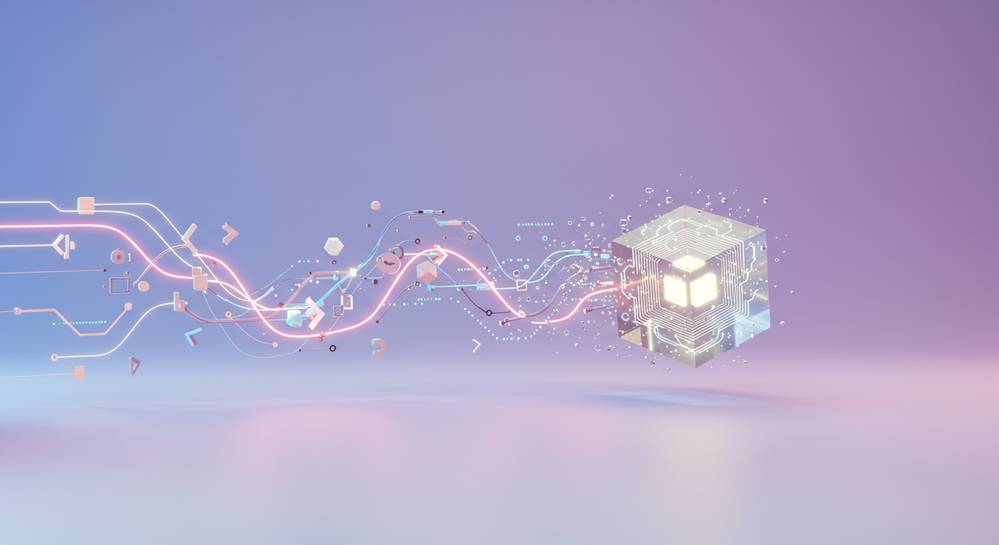Exploring the New Frontier: How Web3 Transforms Our Online Experience
Welcome to the edge of change. I’m diving deep into comparing Web2 and Web3 functionalities because you deserve to know. The internet we surf daily is evolving. We’re not just passive users anymore – our roles, our power in the digital world are shifting. Imagine a place where every click can be an investment, where your data isn’t in someone else’s pocket. That’s Web3. We’ve come from a web owned by others to one where we can plant our own flags. Get ready to explore how our online life is about to change for good.
The Evolution from Web2 to Web3
Understanding the Core Differences: Web2 vs Web3 Technology
We’re on a trip from Web2 to Web3, and it’s quite the adventure. Imagine Web2 as a big mall. Shops there have all you can imagine. But one thing’s off. They know too much about you. Every move you make, they’re watching. And the only folks who really gain are the owners of the mall. That’s Web2: handy, yes, but at a cost to our privacy.
Now think of Web3 as a huge bazaar spread out in the open. No single boss. Instead, loads of small stands run by different folks. You choose who to tell what, and you decide who you deal with. Web3’s like that because it’s made up of decentralized networks. This means no central power calls the shots.
In Web3, blockchain keeps the records. This tech makes sure everything’s fair and open. Smart contracts play their part too, making deals safe without needing a middleman. So users gain control and keep their data private. Web2 had us just having fun. Web3 hands us the keys and says, “You’re in charge.”
Internet Evolution Comparison: The Shift in Paradigm
Moving from Web2 to Web3 changes how we experience the internet. Here’s how:
- Web2 Characteristics: Centralized sites like social media make the rules. They control your stuff and can use it to their gain.
- Web3 Innovations: It’s about you. You own your data, your content, and even part of the services you use through tokens.
- Web2 Digital Advertising: Ads come at us left and right based on what we do online. It can feel like there’s no escape.
- Web3 Ownership Models: Instead of just ads, there are new ways to make money, like sharing in a dApp’s success through tokens.
- Web2 User Experience: Simple and works fine for most things. But it often trades off privacy for ease.
- Web3 User Empowerment: Now you’re in the driver’s seat. You get a say in the services and how your data’s used.
The shift gives us both fun and power. But it’s not all smooth sailing. Getting used to a new way takes time and learning. For example, Web3’s safety is strong. Yet, it’s on us to know how to keep our wallets and tokens secure.
In Web3, we make the rules together, and that’s different from the Web2 way. It feels fresh to shape the services we use. It seems fair to profit from what we create and share. And getting our voice heard in how things are run? That matters.
Getting from here to there isn’t a snap. Yet, we’re building a digital world that’s all about us. We’re creating a place where our privacy, rights, and empowerment stand first. It’s like building a new home. We want it strong, safe, and truly ours. That’s the Web3 promise.

The Pillars of Web3: Decentralization and User Empowerment
Decentralized Networks and Blockchain’s Role in Web3
Imagine talking to a friend but without someone else listening. That’s Web3. It’s a new internet stage that gives power back to users like us. How does it work? It uses something called blockchain.
Blockchain lets us share info directly with others. It’s like passing a note in class that only you and your friend can read. It cuts out the middle man. That’s a big part of why Web3 is safer and lets us control our stuff.
With Web3, we get to own our data. Before, big companies held all the details about us. Now, it’s like we have the keys to our online house, and we decide who comes in. That’s super important for keeping our messages and pictures safe.
Blockchain also helps new apps work better and belong to us, not just to one big boss. We can play games, chat, and trade without worrying so much about who’s in charge. This change makes the internet a fairer playground for everyone.
From Data Privacy Concerns to User Data Control
Ever wonder who looks at what you do online? In the old internet, called Web2, it seemed like everyone could. That made a lot of us uneasy. But Web3 is changing the game.
Privacy matters, and Web3 gets that. It puts you in the driver’s seat. Now we can choose who sees what we do online. It’s a big win for staying private.
Web3 tools let us share only what we want to. Even better, we can make money from it if we choose to. It’s our choice, not some big company’s. That feels pretty good.
This switch from Web2 to Web3 is like moving from a crowded apartment to your own house. You have more room, it’s quiet, and you call the shots. It feels liberating.
So, what’s the big takeaway? Web3 helps us take back control. We get to decide what happens with our information and who we share it with. We’re in charge now, and that’s a big deal.
As friends online, we can enjoy the net safely and freely. Web3’s nifty tech lifts us up and keeps our stuff ours. It’s a fresh start in our digital world, and that’s pretty cool, right?

The Impact of Web3 on User Experience and Service Delivery
Smart Contracts and Token Economies: Enhancing User Interaction
Let’s dive into smart contracts first. These are like magic agreements on the blockchain. They run when certain conditions get met. In Web3, smart contracts change the game. They auto-execute deals with no middlemen. You can trust them because once coded, no one can change them easily. This means both parties know exactly what to expect, and it happens without anyone needing to push the button.
These smart contracts are part of why Web3 feels so fresh. They allow for what we call ‘token economies.’ These economies thrive on cryptocurrencies, which are digital money used in Web3. When you hear ‘Bitcoin’ or ‘Ethereum,’ that’s what they are talking about.
Why are token economies exciting? They open doors to direct rewards for users. Gone are the days when only big companies made money from the web. In Web3, users earn tokens for contributing or even just participating on platforms. It could be posting cool content, playing games, or sharing useful data. This setup puts you in the driver’s seat. You get a real say and real rewards. Pretty neat, right?
Web3 Content Monetization vs. Web2 Content Creation
Content is king, and in Web3, it wears a crown of coins. Unlike Web2, where big shots like YouTube or Facebook control and profit majorly from content, Web3 shakes things up. Here, creators get their fair share through monetization models that pay in crypto. This isn’t just about posting videos or writing articles. It could also be music, art, or anything you create.
Monetizing content in Web3 is bolder and more direct. Fans support creators by sending tokens. Or creators earn through ads without losing a huge cut to platforms. Blockchain makes these transactions speedy and secure. You know who sends you tokens and why. And they know their support goes straight to you, not some faceless company.
Also, in Web3, social networks bloom from the code up with user interests at heart. You connect with others, share ideas, and build communities without worries of hidden rules or sudden changes by the platform owners. This is a good match for the social butterflies out there.
To sum up, Web3 hands the power back to you – whether it’s about making deals, earning money, or just sharing a funny cat video. It’s designed to serve you directly, rather than serve up your data to the highest bidder. In both smart contracts and content, Web3 champion’s user empowerment. Personal creation and personal gain go hand in hand, and that’s a big leap forward. Welcome to a more exciting, fair, and user-focused online world!

The Future of Online Interactions: Transparency, Security, and Governance
Comparing Web2 vs Web3 Security Measures
Web3 is safer than Web2. Here’s why. Web3 security relies on blockchain. This means data gets spread out. It isn’t kept in one place. So, if a hacker breaks into one spot, they don’t get everything, unlike in Web2.
Think of Web2 like a bank with one big safe. If a thief cracks it, they hit the jackpot. Now imagine Web3 as a treasure hunt. With clues hidden far and wide, a thief can’t find all the loot.
Web2 makes it easy for people to snatch your info. Your data sits in giant servers owned by a few firms. In Web3, you own your stuff. Blockchain keeps it locked down.
With Web2, companies watch your every move online. They see what you like and share. Then they show you ads based on that. Web3 changes the game. You decide who gets to see your info.
Now, let’s get into smart contracts. These are like agreements written in code. They run on blockchain. When certain things happen, the contract does its job, no middleman needed. This means less risk and more trust for everyone.
Censorship Resistance and Transparent Governance Models in Web3
Web3 fights censorship better than Web2. Remember those big companies? They can’t just block or change stuff in Web3. Everyone can see what’s happening. It’s open and spread out. If someone tries to mess with something, people notice.
In Web2, a few have the power. They can close your account or change rules as they please. Not in Web3. Here, rules are set in transparent ways. They are recorded on the blockchain and run without favor.
Governance in Web3 is different. It’s not just the big shots calling the shots. Regular users get a say. They can vote using tokens. They can help shape how their favorite apps work. It’s like having a stake in the game.
Talking about voting, it’s not just a hit or miss. Your voice really matters. Every vote gets recorded on blockchain. This ensures it truly counts. In Web2, people run things behind closed doors. Web3 opens those doors wide.
To wrap it up, Web3 brings tools to take back control. It hands power from the few to the many. And not just a little – a whole lot. It promises a safer and fairer internet. An internet where you are in charge.
We dove deep into how the internet is changing from Web2 to Web3. It’s a big shift. Remember, Web3 is about shared control and blockchain tech. Think of it as internet freedom, where your data stays yours. We saw the difference, how we got here, and why it matters.
Web3 has solid supports: it’s spread out so one group can’t own it all. You call the shots on your info. That’s a huge jump from old-school Web2’s ways. Also, smart deals and new money tricks in Web3 can shift how we see value online. Content makers can earn more for their work, which is fair.
Looking ahead, Web3 paints a picture of an open net that’s safer. It stands firm against hacking and keeps your stuff free from sneaky eyes. No one can mess with it easily. And we all have a say – it’s not just the big players in control.
So, remember, Web3 means taking back power, putting people first, and crafting a net where we all win. It’s not just tech talk; it’s a leap toward how we will all share, connect, and live online – bold and bright.
Q&A :
Sure, here’s an outline of FAQ content in Markdown about comparing Web2 and Web3 functionalities:
#### What are the key differences between Web2 and Web3 functionalities?
Web2, often referred to as the participative social web, primarily consists of platforms and services that thrive on user-generated content, centralized on proprietary servers. In contrast, Web3 embodies a decentralized ecosystem built on blockchain technology, emphasizing user sovereignty, data ownership, and peer-to-peer interactions.
#### How does data ownership differ in Web2 vs Web3?
In the Web2 paradigm, data ownership predominantly resides with the service providers who manage the platforms users engage with. This means that personal data can be packaged and sold or used for targeted advertising without explicit consent. Web3 changes this dynamic through blockchain and cryptographic protocols that give users full control over their data, ensuring that they can control who has access to it and how it's used.
#### Can Web3 functionalities improve security compared to Web2?
Web3's decentralized nature inherently enhances security. By leveraging blockchain technology, Web3 reduces the risks associated with centralized data repositories, which are prime targets for malicious attacks in the Web2 architecture. Furthermore, the use of smart contracts and encrypted transactions in Web3 provides a higher level of security for online interactions.
#### What is the impact of Web3 on user experience compared to Web2?
Web3 aims to create a more personalized and user-centric online experience compared to Web2. With the introduction of decentralized applications (dApps), users can navigate the web with greater autonomy and without the need for intermediaries. However, as Web3 is still in its early stages, some users might find the transition requires a learning curve when adapting to new interfaces and concepts.
#### Will Web3 replace Web2 entirely in terms of functionalities?
While Web3 offers a transformational approach to internet interaction with its decentralized functionalities, it's not expected to replace Web2 entirely in the near future. Many Web2 services are deeply integrated into the current fabric of the internet, and certain Web3 functionalities are still evolving. The coexistence of both paradigms is likely as each continues to serve distinct user preferences and needs.
Keep in mind that while I can simulate tones and approaches used in SEO and copywriting, since my last update was in April 2023, the actual user queries in “Google’s People Also Ask” might have evolved. The content provided utilizes common themes and questions around the topic to ensure relevancy and optimization for current search engines.



